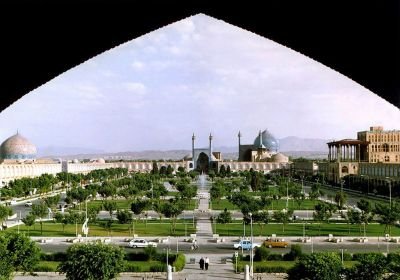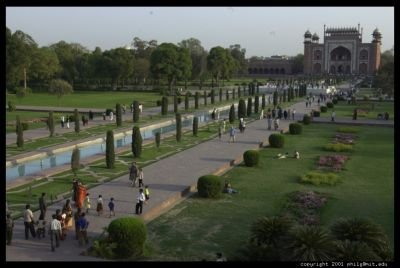Persian Garden Style evolved after the Egyptian Style of gardening. It marked the beginning of “Modern Garden Architecture”. The Persian garden was an answer to the aridity of the local climate where the high walled garden and the shady trees with its air cooled by streams and fountains, was a simple recipe for paradise. Mediterranean and hence all Western Gardens have their origins in Egypt between three and four thousand years ago. Since Egypt is a natural desert depending on the Nile for its fertility, its gardens were planted along reservoirs and irrigation canals.

The canals were straight for practical reasons; trees planted followed straight lines along the canals, It was also natural for the canal to have fish, lotus and supply of water. Hence, the theory goes that axial designs and layouts of gardens, the ‘formality’ of all classical Mediterranean inspired gardens to the present – via the Persians whose style swept eastwards to India and westwards via Spain with spread of Islam, and by the Romans whose adaptation of the Egyptian Style was repeated in the Renaissance.
The Persian garden was an answer to the aridity of the local climate where the high walled garden and the shady trees with its air cooled by streams and fountains, was a simple recipe for paradise.
The word ‘paradise’ originally is believed to have meant a hunting park in Persian and it is still a Persian word for garden. The Persian garden is resolutely formal and is an elaboration of the Egyptian Plan. Two main waterways divided the garden into four – representing it as the four quarters of the universe. The centre of the cross was often a brimming tank lined with blue tiles. In larger gardens subsidiary canals subdivided the garden. Small jets of water made sounds such that water was heard and seen. Tall Chenar trees shaded the centre while the edge of the garden was lined with cypress, pine, poplar, date palms, almonds, orange and other fruit trees. Flowers were sometimes planted along the canals or in the long grass under trees. Tulips, iris, primula, hollyhock, narcissus, evening primrose, violets, anemones, carnations, lilac and jasmine have been mentioned in literature. Some bulbs were native ti Persia but others were brought from plant hunting expeditions abroad. Almost certainly trade or conquest introduced the perpetually flowering Chinese rose. By the 13th century, following the conquests by Mongol emperor Changez Khan, the routes to China were well established and the Chinese influence can be seen in Persian painting. All surviving paintings date from this period or later. They show naturalistic streams and rocky margins, which were features of Chinese Gardens.
The key to the gardens of the Islamic world was the idea of an oasis. All around stretch bare hills in the burning sun. Within the garden wall, the essentials are cool shade and the sight and sound of water.
Common features of Persian gardens
- A high surrounding wall
- Straight tile-lined channels of water
- Bubbling fountains
- Trees for shade and fruit
- A Pavilion or gazebo
- Strong emphasis on flowers in beds and pots

There are no statues as Islamic law forbids idols in human form. The Gazebo or baradari may rise to several storeys depending on the size of the garden and were completely surrounded by water. Persia’s native rose includes the brilliant yellow and the red Rosa Foetida. Lacking flowers in summer, the paving tiles on every surface and their pattern provided colour in the garden. Low hedges line flowerbeds near the gazebo. Ornamental fowl and peacocks introduced from India and Ceylon brought colour to the gardens. The name Charbagh meaning a four-fold garden is still common in India and Persia.

The Moghuls made the grandest of these gardens in the 16th and 17th century in India. The Shalimar Bagh in Kashmir shows a similar layout. Shah Jahan built it in 1642. However, these gardens lacked a high compound wall in India.
Persian Garden Architecture was then followed by Italian and French Garden Architecture…


Hi there, I found your weblog via Google although searching for first support to get a heart assault along with your post
looks pretty interesting for me.
Hazuri Bagh at lahore is also one spectacular piece of persian art architecture..
Yes, very true!
The particular concerns over the attainable outcome of the introduction of contemporary artwork are usually in the middle of our interest for the subject with skill interaction using the sport as public activity. The need for superior decisions inside area with sport representation echoes growing passions towards overwhelming conditions connected with human actions that expose the deepest areas of your nature.
Good Manage this site